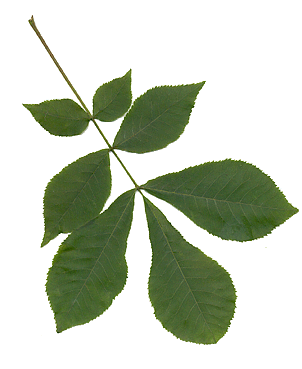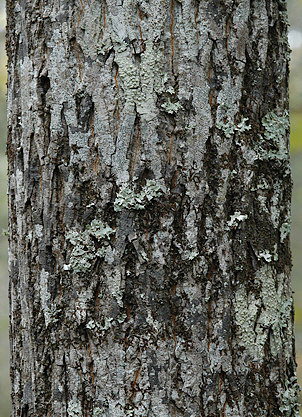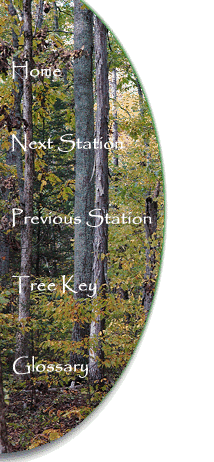| |
|
| |
 |
| |
Bitternut Hickory Leaf |
Identification:
The fall color of the leaves is a golden yellow. The leaves are
6 inches to 10 inches in
length, and are alternate,
pinnately
compound, shiny above and paler
and lightly hairy below. Each leaf has 7 to 11 sessile
leaflets. The
margins of the leaflets are
serrate. The
rachis is slender and slightly hairy.
Compare these leaves to those of the Shagbark Hickory, and to those
of the White and Blue Ashes. Note the
alternate pattern of the
leaves and branches, which distinguishes this tree from the ashes,
which are opposite.
| |
|
 |
|
|
Bitternut Hickory Bark |
The bark of the Bitternut Hickory is
a slate gray. In older trees the bark becomes shallowly
fissured with interlacing ridges.
The twigs of the Bitternut Hickory
are gray-brown and lenticellate.
| |
|
| |
 |
| |
Bitternut Hickory Nut |
The nuts are spherical to
pear-shaped, 1-1/2 inches in diameter, with a thin husk splitting
into 4 parts. The fruit is very bitter to the taste.
Other Uses
and Lore:
The wood of the bitternut hickory has been used for
tool handles and agricultural implements. It is also used in the
curing process for curing hams and bacon. Early settlers
pressed an oil from the nut, which some used as a remedy for
rheumatism, while others used it to fuel crude lamps.
The nuts are eaten by a wide variety of wildlife,
including wild turkey, squirrels, small rodents, raccoon, and
white-tailed deer.
The
Trail From Station Ten to Station Eleven
 |
| Spotted
Datana Caterpillar |
It is only a
short distance from Station Ten to Station Eleven. The trail
at this point has flattened out, and will remain flat until you
reach the river overlook. The woods on the right of the trail
are more of a bottomland habitat, and this is a good spot to look
for Barred Owls. These owls are often active during daylight
hours and can sometimes be spotted perched on a branch. Listen
for the scolding notes of birds. They often will lead you to a
perched owl. Look also for fall caterpillars like the Spotted
Datana at right. This one is in the foliage of an Eastern
Hophornbeam.
|

